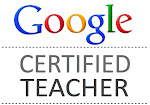Mrs. Yollis' class is participating in the International Student Blogging Challenge!
The focus of week 2 is composing QUALITY comments!
Parts of a Blog
Blogging has many parts: the post, the comments, and the sidebar. If you do a good job with all of the parts, your blog will be more interesting. Today we will focus on quality comments! The comment section is where the blog comes to life and a learning community is built.
Content is key!
What should I say in my comment?
In our class, we evaluate our blog comments. A one-point comment is a general comment that doesn't add very much to the post. Example: I like your blog. Please visit mine!
A two-point comment adds something to the comment conversation. A commenter might compliment the writer in a specific way or add new information. Another idea is to make a connection. Maybe the post reminds you of an experience that you've had. Share that connection! Try to end your comment with a relevant question. That way, an interesting conversation can develop.
Here is a video made by Mrs. Yollis' students called How to Compose a Quality Comment! It offers FIVE tips to help you take your comments to the next level!
Mrs. Yollis made a poster using the five-steps to writing a quality comment. You are free to use this infographic, but please give credit and link back to this blog.
Comment by Linda Yollis
Comment by Linda Yollis
We like to open our comments with a greeting and end with a closing. We choose to do this as it makes it easier for us to follow the conversation within a comment section.
How do you get comments typed and published?
-For Advanced Bloggers-
Some bloggers like to use HTML code to make their comments better. Learning to write HTML code, or HTML tags, is a somewhat simple way to take your comment to the next level.
HTML (Hypertext Markup Language) is a language.
* * * * *
Important: Do not add a space between the HTML tag and the word or sentence.
1. To put text in italics, place this HTML code around the text:
2. To make text bold, place this HTML code around the text:
The sentence will look like this when published:
Bloggers should always proofread a comment before publishing.
Bloggers should always proofread a comment before publishing.
3. To make a hyperlink, it gets a little tricky.
Use the following HTML code around the URL and add your own link word/words:
[The URL is the address of the web page. It starts with http://www…]
The HTML code below:
Sometimes it is hard to remember the HTML codes. I keep an HTML word document on my desktop with all the common codes, especially the one to create a hyperlink. Here is a video demonstrating how easy it is to a create a hyperlink if you have the code set up in a Word doc.
If you like to add fun shapes...here are those codes!
My class, DO NOT sign into anything. Instead, choose NAME/URL
Use FIRST NAMES ONLY.
What did you learn about quality commenting?
Why is it important to proofread a comment before pressing publish?
Here are some comment starters:
What do you use to learn typing?
What are some famous landmarks in your country and have you visited them?
What are some traditional foods from your area?
What are some professional teams in your area?
What languages do you speak?
What do you use to learn typing?
What are some famous landmarks in your country and have you visited them?
What are some traditional foods from your area?
What are some professional teams in your area?
What languages do you speak?









































